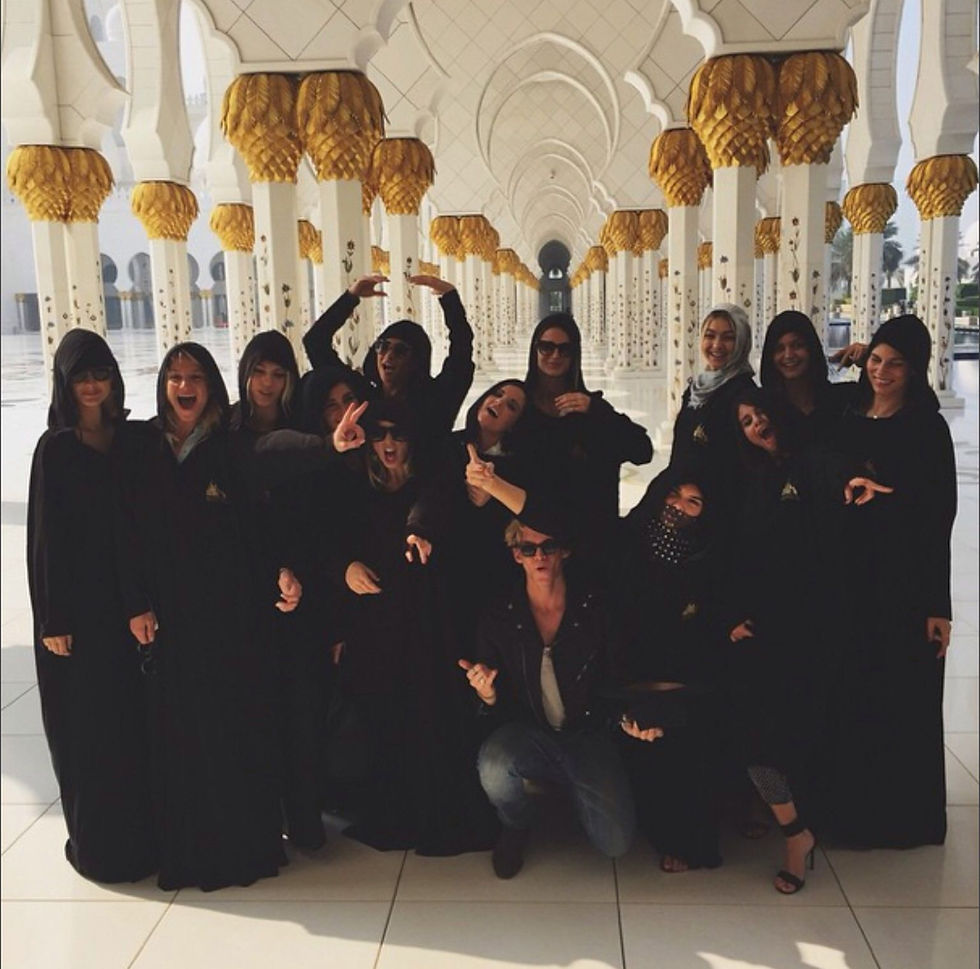The history of the abaya.
- ilham
- Jul 14, 2021
- 3 min read

What is an abaya
An abaya is a long, flowing robe that is usually worn loosely and worn over everyday clothing. It runs to the feet and has long sleeves so that the body is completely covered. Usually an abaya is black, but many changes have come over the years. There are now many more colored abayas on the market.
All over the Middle East you will see local women, as well as many expats, wearing the abaya. In fact, it is now a common phenomenon in many other Muslim countries where women find it easy and the best way to cover their bodies, leaving only their face, hands and feet bare.
To cover their head, most people opt for the shayla or hijab, a scarf that is tied around the head so that no hair is visible. Some people complement the abaya with a niqab, which covers both the head and face. Some non-Muslims also wear the abaya because they find it easier to blend in with the locals and they don't have to worry about what they are wearing underneath.
Pre-Islam
The history of the abaya is rather vague and obscure, but this robe-like garment is believed to have been around for over 4,000 years. Historical evidence points to its use by ancient civilizations, especially the Mesopotamians who wore clothing as long and as loose as today's abaya. However, there is doubt that the garment was probably not known as the abaya at the time. It is also believed that the abaya-style garment from this era was probably more revealing than the post-Islam abaya.
In pre-Islamic times, it is believed that covering a woman's body was more about status than religion. It was perhaps seen more as a symbol of extravagance and luxury, and was attracted to women who did not have to do work. It is also widely believed that they wore a veil with their abaya-style garment to separate them from working-class women who could not afford a veil with their abaya-style garment.
Post-Islam
When Islam came into existence in the 7th century and the Quran was revealed, the concept of women covering their bodies became more important and its significance increased.
It has been speculated that the garments Muslim women use to cover themselves after the advent of Islam may have been inspired by the abaya-like garment of the pre-Islamic era, and it is during this period that the abaya acquired its religious connotation. with which most Muslims today associate it, although it has undergone many evolutions since then.
The abaya today
In most Arab cultures, and other parts of the Muslim world, where the abaya has become quite the norm as a representation of religious devotion and a symbol of Arab culture, it is usually black in color. Since the abaya is the only piece of clothing seen on those who wear it, it has also become somewhat of a fashion statement over time. With many different designs and variations available in the market now. However, one thing remains the same in most cases: the purpose of the abaya is to cover the body!
Pre-oil eraper
In the era before the Arab world became oil rich, an upper class Bedouin wore a black abaya called the 'laff' which was square in shape with two holes for the hands (this would hide the arms) and had a wide gold border around the neck. A normal Bedouin woman wore a large double-width headscarf or shayla that encircled the entire upper body and worked as an abaya.




Comments